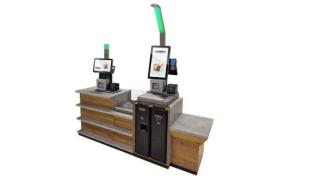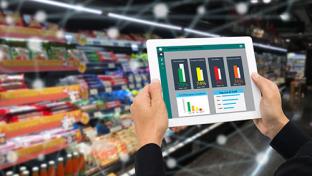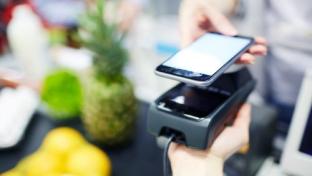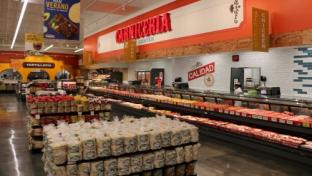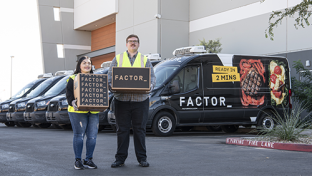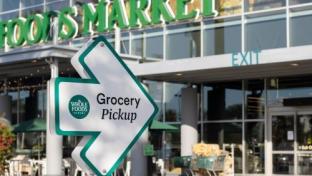How Self-Checkout Is Adapting to Meet Customer, Retailer Needs
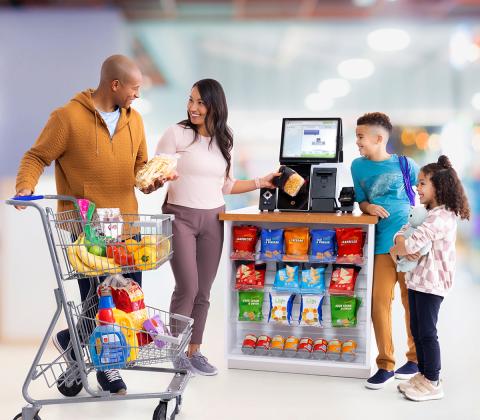
Self-checkout is undergoing tremendous change as technology evolves and expectations rise both from consumers who want faster and more customized experiences and grocers that want to save labor and more effectively engage customers, so companies producing both hardware and software are adapting.
Today, self-checkout in stores needs to be quicker and less prone to errors; however, many companies in the sector believe that no single self-checkout system will dominate food retailing and that tomorrow’s grocers will be providing more choice in how to finish a store visit.
[Read more: "Rhode Island Wants to Limit Self-Checkouts in Grocery Stores"]
Focus on Flexibility
With grocery changing fast, self-checkout has to evolve, according to Matt Miles, director, self-service business development, at Hudson, Ohio-based Diebold Nixdorf.
“Retailers are introducing new self-service concepts in sections of the store beyond the checkout area, such as foodservice ordering, deli ordering, smart carts and even cake customization,” says Miles. “Our customers are primarily focused on making the consumer experience easier to increase basket size, removing friction in the journey to improve transaction throughput, and minimizing their overall impact on the environment. By introducing Vynamic\SmartVision Fresh Produce Recognition, we are reducing the time it takes to identify and select the correct item from the produce pick list.”
Diebold Nixdorf recognizes that grocery stores have to exist in and grow with a community and its expectations, so it focuses on choice flexibility in application.
“Modularity enables retailers to quickly and easily change configurations to suit different consumer journeys and find the optimal checkout experience,” notes Miles. “Open cloud-native software makes it easy to integrate new systems into legacy store IT environments, adapt new technologies and applications, and support a smooth evolution of retail journeys.”
Based on feedback and its own experience, Diebold Nixdorf is “always looking to introduce solutions that enable retailers to support multiple journeys, leverage common platforms, and reduce costs of integration and/or ongoing support. As an example, we have recently released a solution that can, at the same time, support a fully assisted, fully self-service or semi-assisted checkout experience with one device, appropriately named DN Series Easy ONE.”
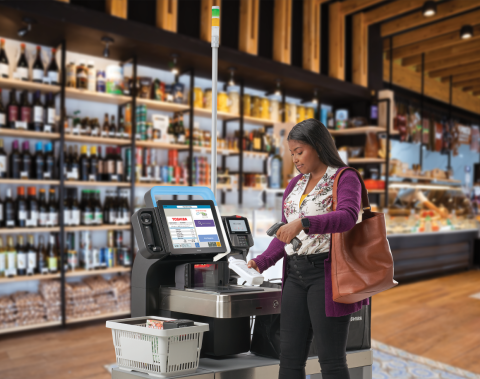
Upping Shopper Engagement
According to David Wilkinson, EVP and president at Atlanta-based NCR Commerce, today’s self-checkout systems have operational benefits that can help grocers deal with critical concerns.
“As labor challenges persist in grocery stores, grocers continue to look for ways to deploy the labor they have in the most productive ways,” says Wilkinson. “They also want to provide as little wait time as possible for shoppers. This has led to less cashiers in assisted lanes, and as many self-checkout lanes as a grocer can afford from both a financial and real estate perspective, with labor deployed in other areas. As this shift continues, it brings grocers both new opportunities and new threats. The new threats are generally related to shrink. ... Grocers are responding by deploying scalable artificial-intelligence (AI) technology powered by computer vision to identify these shrink events and avoid them. NCR has integrated this technology into the NCR Commerce Platform to make it easily available to customers.”
However, the shopper relationship is key, and evolving self-checkout systems can integrate more store functions, helping grocers strengthen bonds with customers.
“Shoppers can receive tailored offers and advertisements, or consume new services hosted on the self-checkout device: buy lottery tickets, buy crypto, consume financial services, etc.,” notes Wilkinson. “It also allows customers to self-scan in store aisles and complete transactions in self-checkouts. Grocers are looking for solutions that allow pluggability and extensibility to these types of services and allow seamless integrations into scan-and-go solutions. The NCR self-checkout solution integrates into the NCR Commerce Platform to support exactly these capabilities, including a market-leading white-labeled scan-and-go and e-commerce solution in NCR Freshop.”
NCR is addressing the bulk produce challenge with its Picklist Assist function.
“NCR Picklist Assist uses computer vision technology to identify the produce that has been placed on the scale and brings up a ranked list of most likely items for the shopper to choose from,” explains Wilkinson. “This solution reduces shrink and fraud as it detects whether a shopper is attempting to inaccurately select a produce item for a barcoded item. Our computer vision solution ... provides a faster, minimal-contact checkout experience. Primarily for smaller basket sizes, this solution enables a shopper to place their entire basket on the self-checkout at once and instantly see those items on the self-checkout screen.”

Less Friction
Change is coming, but rather than replacing what’s already established, new self-checkout systems may primarily supplement them, at least for now.
“Retail is transforming faster as technology advances and consumers’ shopping expectations evolve,” says Fredrik Carlegren, VP of marketing and communications at Durham, N.C.-based Toshiba Global Commerce Solutions. “Today’s consumers expect a fast, personalized and frictionless experience. Grocers need to embrace both the online and in-store experiences to appeal to generations of consumers.”
Carlegren adds that advancing technology makes self-checkout more convenient and easier to use, while also reflecting consumer experiences online.
“Today’s shoppers demand a seamless buying experience between digital and physical stores,” he observes. “Reducing friction during the shopping experience can make the difference between an enjoyable shopping experience and a frustrating one.”
Carlegren goes on to describe just how self-checkout and related technology can provide a simpler, more pleasant experience for shoppers.
“Computer vision-enabled self-service kiosks with produce recognition powered by [Toshiba Commerce’s] ELERA Produce Recognition can automatically and more accurately scan and validate multiple items simultaneously,” he says. “This technology increases scanning accuracy, reduces the need to input codes manually and reduces the need for intervention from store associates, making the self-checkout process a faster, friendlier and more innovative experience for consumers while supporting loss prevention and shrink. Food retailers are also offering various payment options ranging from traditional card payments to digital wallets and mobile payments that can be tendered using secured contactless tap and pay. By offering multiple ways for consumers to pay at self-checkout, shoppers can pay for their items with their preferred method.”


